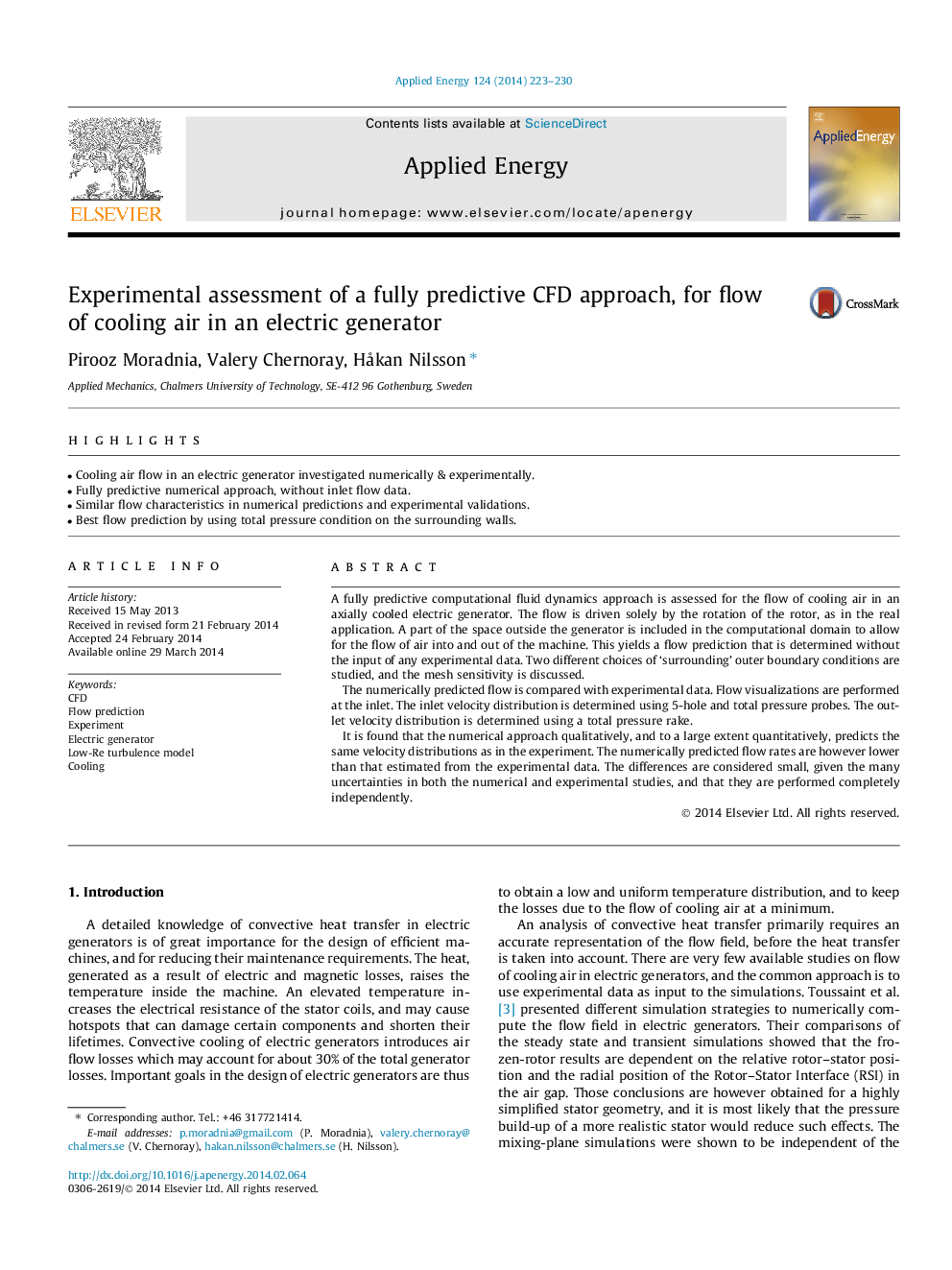| Article ID | Journal | Published Year | Pages | File Type |
|---|---|---|---|---|
| 242827 | Applied Energy | 2014 | 8 Pages |
•Cooling air flow in an electric generator investigated numerically & experimentally.•Fully predictive numerical approach, without inlet flow data.•Similar flow characteristics in numerical predictions and experimental validations.•Best flow prediction by using total pressure condition on the surrounding walls.
A fully predictive computational fluid dynamics approach is assessed for the flow of cooling air in an axially cooled electric generator. The flow is driven solely by the rotation of the rotor, as in the real application. A part of the space outside the generator is included in the computational domain to allow for the flow of air into and out of the machine. This yields a flow prediction that is determined without the input of any experimental data. Two different choices of ‘surrounding’ outer boundary conditions are studied, and the mesh sensitivity is discussed.The numerically predicted flow is compared with experimental data. Flow visualizations are performed at the inlet. The inlet velocity distribution is determined using 5-hole and total pressure probes. The outlet velocity distribution is determined using a total pressure rake.It is found that the numerical approach qualitatively, and to a large extent quantitatively, predicts the same velocity distributions as in the experiment. The numerically predicted flow rates are however lower than that estimated from the experimental data. The differences are considered small, given the many uncertainties in both the numerical and experimental studies, and that they are performed completely independently.
